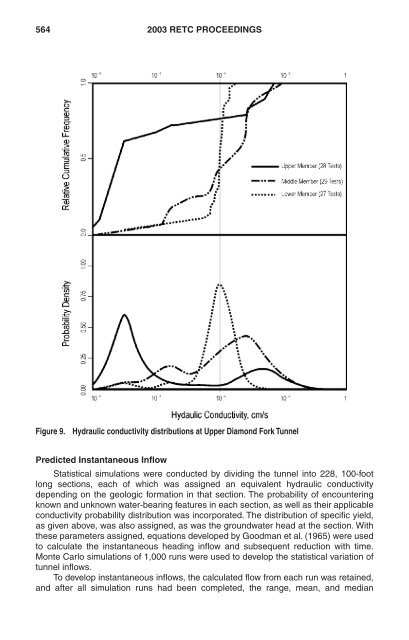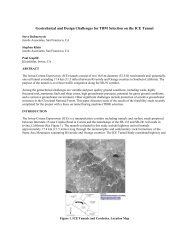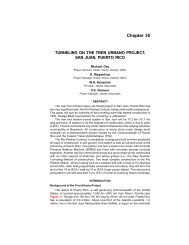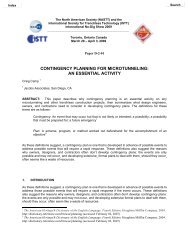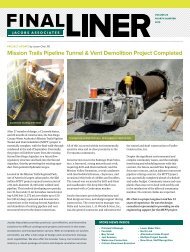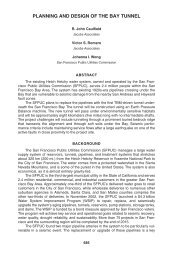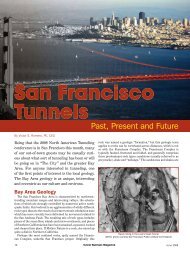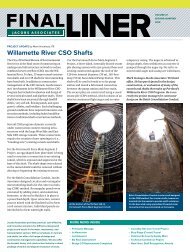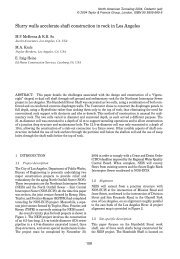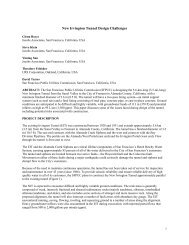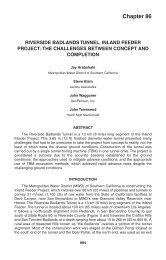Predicted and Observed Groundwater Inflows into Two Rock Tunnels
Predicted and Observed Groundwater Inflows into Two Rock Tunnels
Predicted and Observed Groundwater Inflows into Two Rock Tunnels
You also want an ePaper? Increase the reach of your titles
YUMPU automatically turns print PDFs into web optimized ePapers that Google loves.
564 2003 RETC PROCEEDINGS<br />
Figure 9.<br />
Hydraulic conductivity distributions at Upper Diamond Fork Tunnel<br />
<strong>Predicted</strong> Instantaneous Inflow<br />
Statistical simulations were conducted by dividing the tunnel <strong>into</strong> 228, 100-foot<br />
long sections, each of which was assigned an equivalent hydraulic conductivity<br />
depending on the geologic formation in that section. The probability of encountering<br />
known <strong>and</strong> unknown water-bearing features in each section, as well as their applicable<br />
conductivity probability distribution was incorporated. The distribution of specific yield,<br />
as given above, was also assigned, as was the groundwater head at the section. With<br />
these parameters assigned, equations developed by Goodman et al. (1965) were used<br />
to calculate the instantaneous heading inflow <strong>and</strong> subsequent reduction with time.<br />
Monte Carlo simulations of 1,000 runs were used to develop the statistical variation of<br />
tunnel inflows.<br />
To develop instantaneous inflows, the calculated flow from each run was retained,<br />
<strong>and</strong> after all simulation runs had been completed, the range, mean, <strong>and</strong> median


